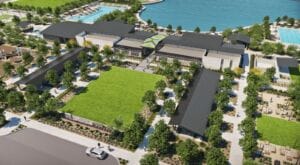It is obvious the Valley is landlocked, but not all of that land is up for grabs.
Only 17 percent of land in Arizona is private land available for development. The public state trust owns a majority of the undeveloped land in the state.
“I felt this is a well-kept secret,” said Kuldip Verma, CEO of Vermaland, one of the largest landowners in Arizona.
This will cause a scramble for land as developers try to tie up the remaining land and, once those are spoken for, developers will have a difficult time to find land for their projects, Verma said.
“As Phoenix grows, it will eventually become landlocked. You just cannot make any more land, and everything requires land,” Verma said.
As the population grows land development will be forced around the state parcels that are not up for auction. The State Trust determines what land goes up for sale with the goal of maximizing profits for the state.
“You need to pay attention to the State Land Department,” said Nate Nathan, president and broker of Nathan & Associates.
About 200,000 acres a year are auctioned statewide and there is no way to predict what land will go to auction, Nathan said.
Much of the Valley is backed up against state-owned land. However, there is land in the path of growth in the West Valley that can accommodate the growth, said Greg Vogel, CEO and founder of Land Advisors, the nation’s largest brokerage company focused exclusively on land.
The West Valley is the only area in the Valley that isn’t landlocked, and experts believe we will see a majority of future development in this area.
“It is estimated the West Valley will capture about 42 percent of permits over the next few years,” Nathan said.
The population of Phoenix is expected to add one million people every 10 years. The general consumption of land as the population grows is one acre for land for every six people, Vogel said.
Vermaland’s strategy is to buy land about 10 to 15 miles outside of existing development that is strategically located and has characteristic that will appeal to developers, Verma said. Most of its land is raw and undeveloped, Verma said.
“You can buy land at an extremely low per acre price and then develop it and sell it for a very high return,” Verma said.
As the Valley grows, development pushes outward and these raw areas become prime real estate.
When buying and selling land, developers consider availability to utilities, transportation and access, Vogel said. New freeways are dissecting the Valley and we can expect new development to occur at these off ramps.
Development will follow these freeways, job listings and a cooperative government that supports economic development, Vogel said.
Arizona can also expect to see growth up as it grows out, getting denser in downtown Phoenix, Tempe and Scottsdale.




